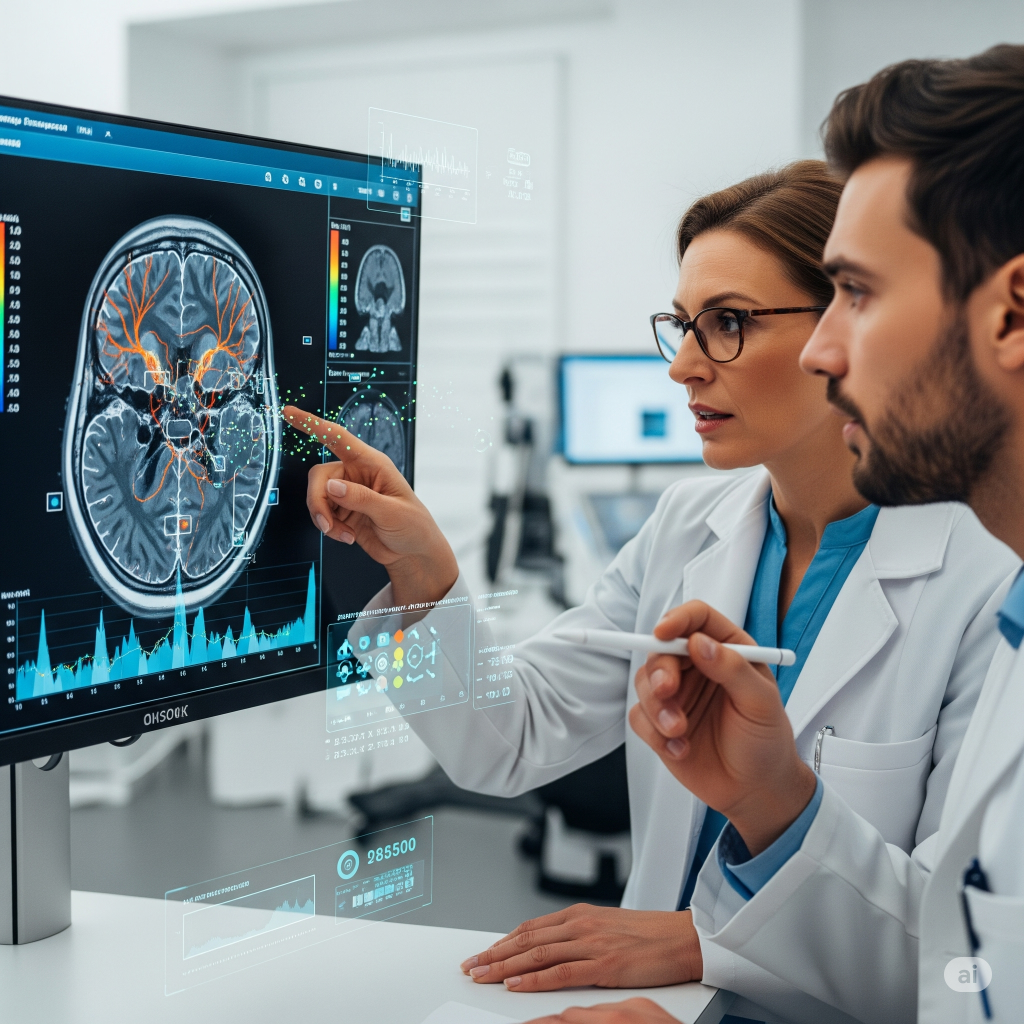A groundbreaking study published in Nature Communications reveals that advanced artificial intelligence (AI) models can estimate a person’s brain’s biological age with remarkable accuracy using MRI data. This “brain-age gap” — the difference between biological and chronological age — is emerging as a powerful early indicator of neurodegenerative conditions such as Alzheimer’s disease, often years before clinical symptoms appear.

What the Science Shows
From MRI Scans to Risk Prediction
AI algorithms analyze brain structure and functional connectivity to detect subtle signs of accelerated aging. Individuals with an “older” brain age than expected show a higher correlation with mild cognitive impairment (MCI) and Alzheimer’s disease. The average brain-age gap increases progressively from healthy individuals to those with MCI and then to dementia patients.
Global Validation
The research spans over 5,300 participants across 15 countries, including regions in Latin America and the Caribbean. The results demonstrate that socioeconomic factors, environmental stress, pollution, and gender can influence brain-age readings.
Accuracy Across Different Settings
New models, such as SynthBA, have been developed to ensure predictions remain consistent across different MRI scanners, imaging sequences, and resolutions. This capability is crucial for making AI brain-age assessments widely accessible without the need for retraining models at each facility.
Why It Matters
- Early Warning Without Diagnosis: These models can detect elevated risk a decade or more before symptoms appear. In some cases, functional MRI can predict dementia with around 80% accuracy up to nine years in advance.
- Opportunities for Prevention: Research suggests that lifestyle changes — including diet, exercise, and stress management — can slow brain aging, even after early signs of accelerated decline are detected.
Challenges and Ethical Considerations
Equity and Representation
Many AI models have been trained on data from limited demographic groups, creating a risk of underrepresentation and bias. Disparities in access to healthcare, education, and resources can influence both the brain-aging process and the accuracy of predictions.
Technical Barriers
Differences in MRI hardware, imaging protocols, and population demographics remain a challenge for large-scale deployment. Sex-based differences in prediction accuracy have also been observed, highlighting the need for further refinement.
Counseling and Privacy
Receiving a report that one’s brain is “older” than expected could cause anxiety and potential misuse of health data. Clear communication, informed consent, and strong privacy protections are essential before such tools are widely implemented.
Potential in Clinical Trials
One of the most promising applications of AI brain-age models lies in clinical trial recruitment. In a recent Alzheimer’s drug trial, an AI-driven stratification tool identified slow-progressing patients who experienced 46% slower cognitive decline. These patients would have been overlooked by standard amyloid-based selection methods.
Key Questions for the Future
- Should brain-age screening become a routine part of annual health checkups?
- How can low-resource settings be equipped with portable MRI and AI analysis for early detection?
- What psychological and ethical safeguards are needed when predicting disease risk long before symptoms appear?
- Could brain-age results be used not just for risk identification but as a motivational tool for lifestyle improvement?
Real-World Scenarios
- A 55-year-old patient learns her brain is a decade “older” than expected and is offered tailored lifestyle coaching alongside a spot in a prevention trial.
- A clinical trial for a new Alzheimer’s therapy uses AI brain-age analysis to select participants who are more likely to benefit, reducing trial costs and timelines.
- Rural clinics use portable MRI devices combined with AI analysis to bring early dementia risk screening to underserved communities.
Conclusion
AI-powered brain-age analysis represents a significant shift from reactive to proactive neurology. By identifying subtle signs of accelerated brain aging long before traditional tests, it offers an opportunity to intervene early — whether through lifestyle changes, preventive treatments, or targeted clinical trials. The challenge now is to ensure these tools are accurate, equitable, and ethically deployed, so that their benefits reach all populations and truly change the course of neurodegenerative disease.

Leave a Reply